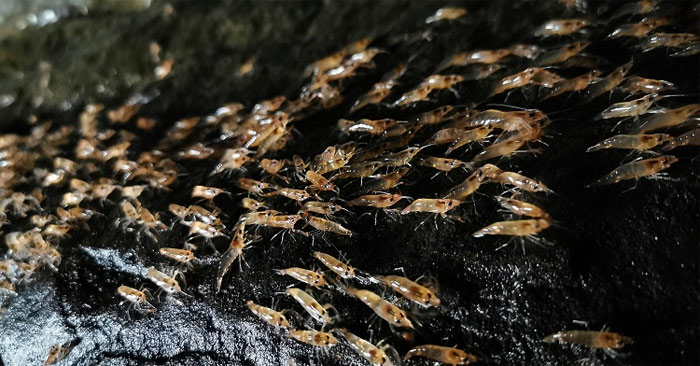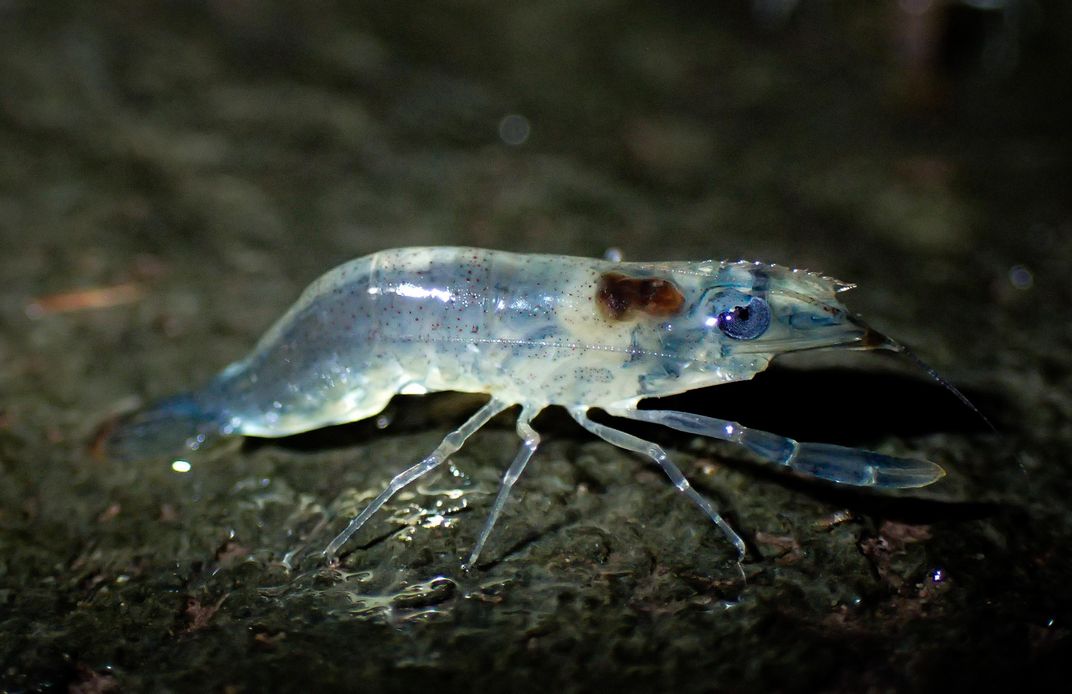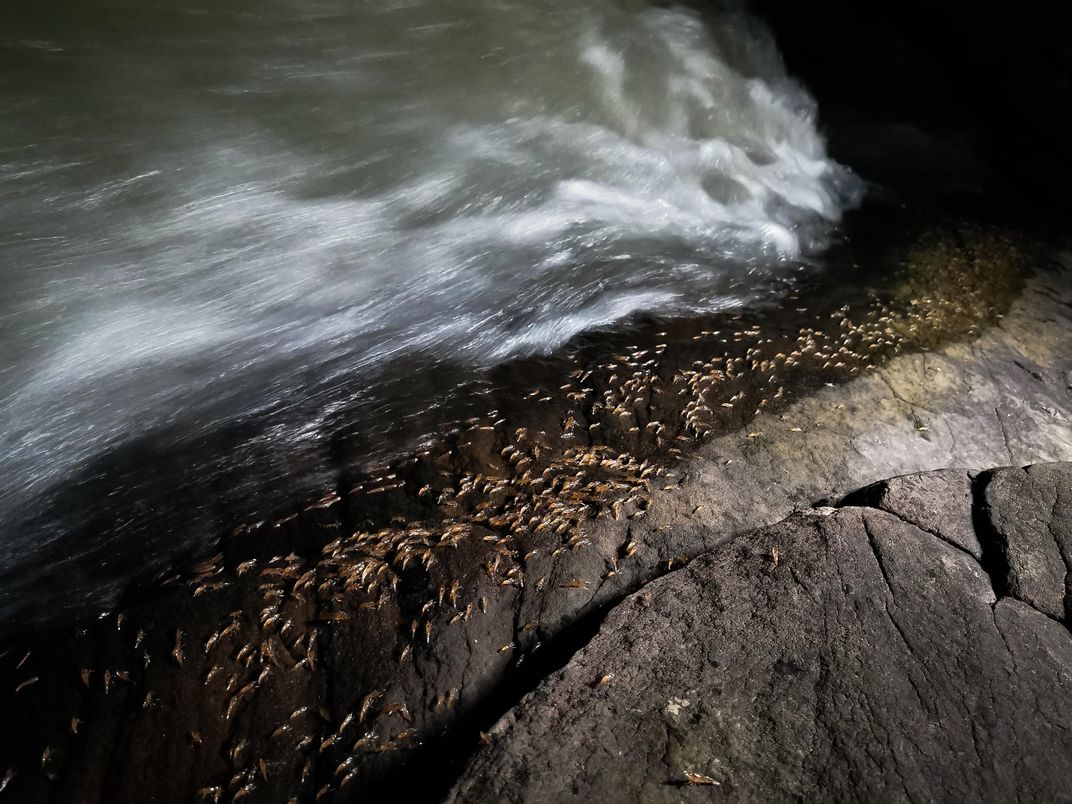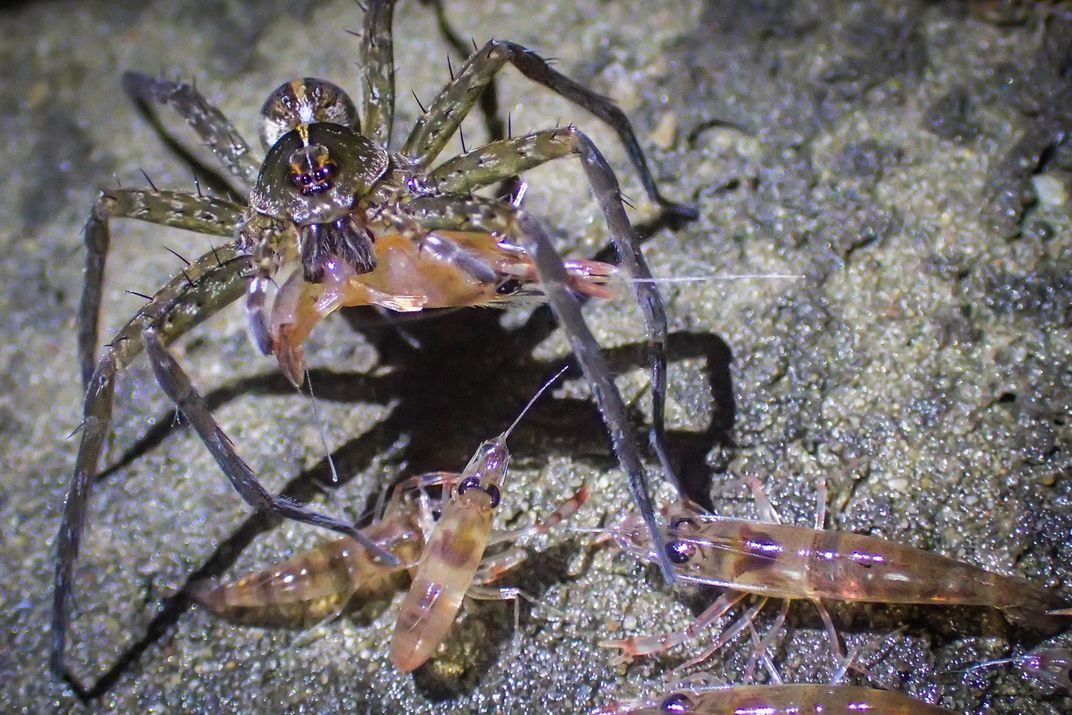Shrimps in northeastern Thailand stop swimming at dusk and gather near the river’s edge and walk along the rocks during the annual rainy season from late August to early October, attracting many tourists to visit.

After the Sun sets, the shrimp begin to crawl out of the water and march. They crawled along the rocks all night.
Researchers discovered shrimp marching at two locations including a cluster of rapids and a low dam along the river in Ubon Ratchathani province, Thailand.

Below is one of the videos recorded by the research team showing the shrimp marching up to 20m upstream, from sunset to sunrise. Some shrimp even left the water for up to 10 minutes.
When observing the shrimp shells, scientists discovered that they seemed to retain a little water around their gills.
According to DNA analysis results, all shrimp participating in the parade belong to the species Macrobrachium dienbienphuense, a family of shrimp that lives mainly or entirely in freshwater environments.

The marching shrimp are mostly juveniles, which can leave the water when the current is too strong for them. Meanwhile, adult shrimp are less likely to crawl ashore because they can withstand strong currents without being swept away.

For small shrimp, walking on land is very dangerous, even in the dark. Predators such as frogs, snakes and large spiders are always lurking nearby, ready to eat them at any time. In case the marching shrimp lose their way, they can dry out and die.





